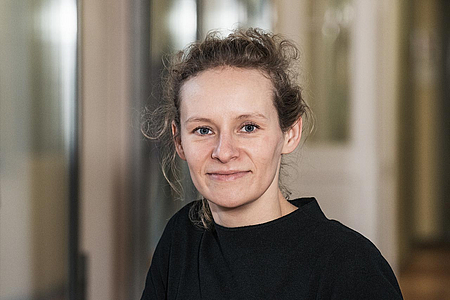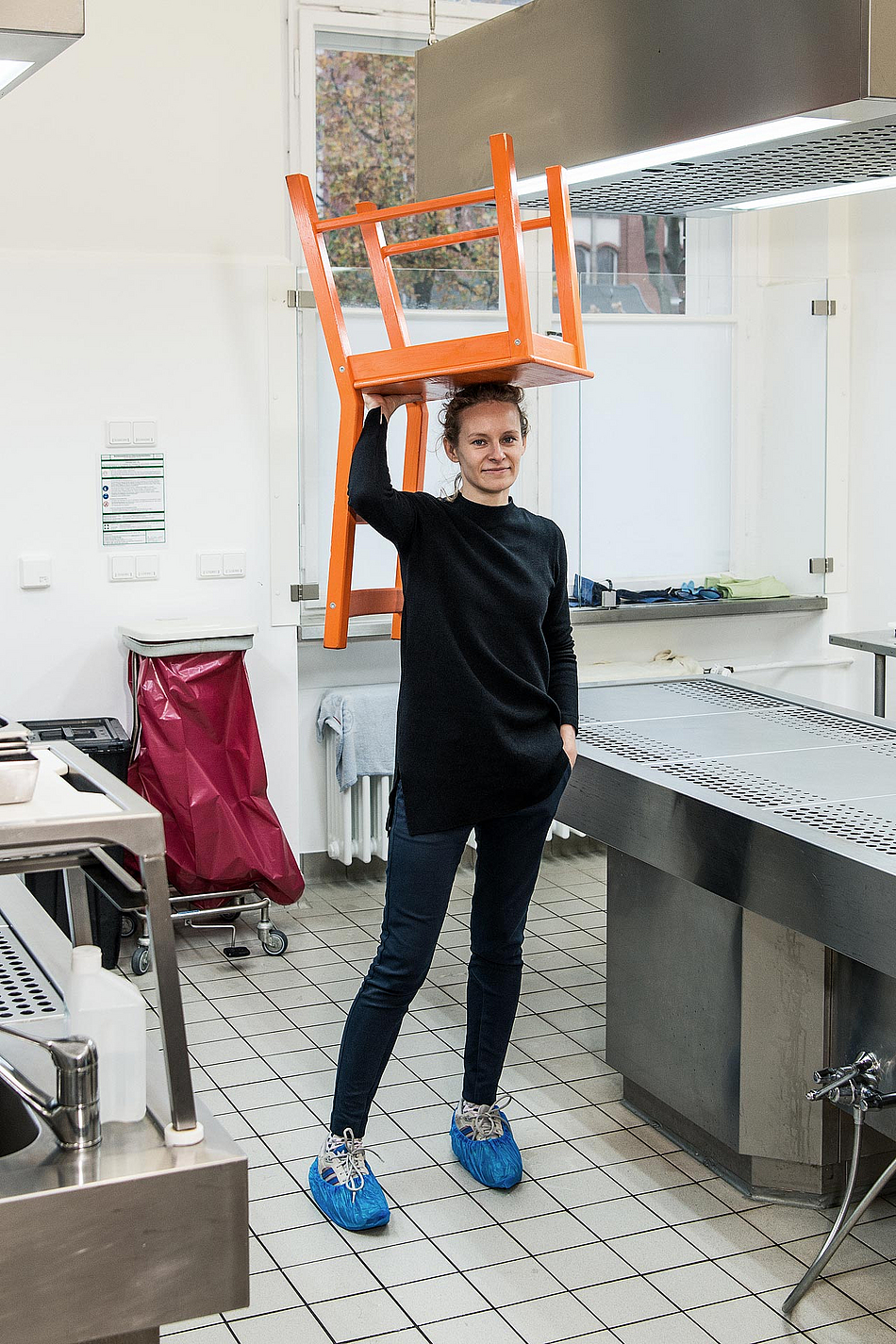Marine biologist, journalist or in fact a Clinician Scientist?
Most of the time, the neuropathologist Josefine Radke stands by at the Charité to examine samples that arrive fresh from the operating room under the microscope. Until recently, she was also able to get to grips with more fundamental questions in protected research periods. At our meeting, she told us about the limits one reaches as a Clinician Scientist and the direction in which her career could have taken her.
Dr. Radke, why did you also want to do research in addition to your work at the clinic?
Patient care, that is, the daily histological assessment and appraisal of incoming histological material, is very exciting and I find it great fun. However, an advanced, future-oriented medical system can only come into being through research. For example, it enables the discovery of prognostically important changes in the genetic material or the development of new therapy methods. In research, you have the opportunity of pursuing different questions and hypotheses and solving them using various scientific lab technologies. It’s a completely different kind of work. Routine and research are two different worlds and I enjoy crossing the border between them. You need a high level of frustration tolerance and often reach your own limits. This makes it all the more inspiring when you have breakthroughs and successes after working long and hard on a particular subject.
What exactly is your main focus as a BIH Charité Clinician Scientist?
Within the framework of the BIH Charité Clinician Scientist Program, I was able to work on several projects and develop cooperative work. There wouldn’t have been enough time for that in my everyday clinical work. My main project was focused on the genetic changes that occur in tumors of the lymphoid tissues that first appear in the central nervous system – known as “CNS lymphoma”. To be precise, it is a special subtype of a malignant lymphoma of the B-cells, i.e. the white blood cells, which only ever occurs in the central nervous system, such as the brain. We wanted to elucidate more precisely how this subtype differs from other malignant B-cell lymphomas and why it occurs exclusively in the central nervous system. We also researched alternative therapy options. Our results have contributed to a better understanding of the genetic landscape of this tumor. The Clinician Scientist Program is a fantastic opportunity to combine research with clinic work. I have the feeling that it not only made me a better researcher, but all in all, a better doctor.
What originally led you to the Charité in Berlin?
I was keen to become a specialist in neuropathology, so I had a look where there were large institutes with an extensive range of incoming samples.

Funding program
BIH Charité Clinician Scientists
Funding period
2015 – 2018
Project title
Molecular genetic analysis and preclinical modeling of CNS lymphoma
Research area
Neuropathology
Institution
Charité – Universitätsmedizin Berlin
2011
License to practice medicine and completion of her PhD
2017
Birth of her daughter Theodora Caroline
2018
Consulting physician in neuropathology
The Neuropathology section of the Charité is good place for that. Here, you can be sure of seeing a lot. That’s decisive for getting a good training. In addition, the Charité has a good national and international reputation. Also, I come from this region and have family ties here.
If someone wants to work in a clinic, what character traits do they absolutely need? And in turn, what character traits do you need for doing research?
I think both fields of work require a high degree of commitment and concentration. Empathy and the ability to communicate well are needed when interacting with patients, and a high level of frustration tolerance and persistence are an advantage in research. The important thing is, and this applies to both fields of work, to always be critically scrutinizing yourself, questioning your own work or your own methods in a healthy way and being open to the opinions or critique of others.
What place – other than the laboratory and the Charité – do you connect to your research field?
My regular jogging route. When I’m running, my thoughts can flow. I sometimes get good ideas or solutions to scientific questions.
You also seem to feel a strong connection to the Baltic Sea. What does it have that Berlin doesn’t?
That’s easy to answer: the character of the people, the open view of the horizon and the vastness of the sea.
During the photo session, you mentioned that you used to want to be a marine biologist or a journalist. Where would you be today if you had chosen one of those professions?
That’s difficult to answer. When I thought about each of those jobs, I had a specific image of the job in my mind.
As a marine biologist, I saw myself on a Greenpeace research ship, working on protecting and saving whales and dolphins. As a journalist, I wanted to look for exciting stories all over the world and to write for DIE ZEIT or DER SPIEGEL. As I grew older, my concepts of jobs became clearer and more realistic and the romantic image faded into the background somewhat. The nice thing about medicine is that it offers extremely diverse job opportunities, ranging from clinician to medical journalist. For over twenty years, i.e. since the time when I wanted to be a marine biologist, I’ve avoided eating tuna and I hope that’s already saved a few dolphins.
December 2018 / MM
